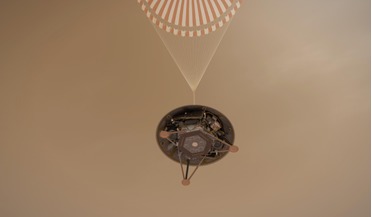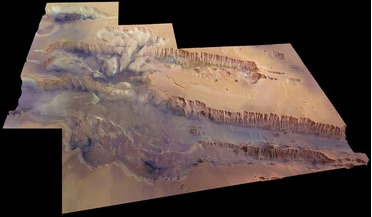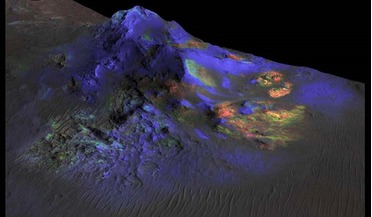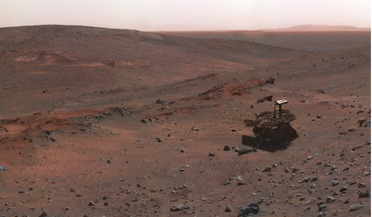 26 November 2018
Success for InSight as it performs a flawless landing on Mars
26 November 2018
Success for InSight as it performs a flawless landing on Mars
... months beforehand to pre-program every stage of InSight's landing, making adjustments based on weather reports from NASA's Mars Reconnaissance Orbiter flying overhead. InSight’s EDL phase was watched by a whole host of eyes and ears around the globe...
 14 May 2021
China is about to land its Zhurong rover on Mars
14 May 2021
China is about to land its Zhurong rover on Mars
... subsurface ice or permafrost. Past studies by scientists using SHARAD, which stands for SHAllow RADar, onboard NASA’s Mars Reconnaissance Orbiter, have suggested that a volume of water ice around 1.2 times the volume of Lake Superior in the US could...
 29 March 2019
Water on Mars is active today says new study
29 March 2019
Water on Mars is active today says new study
...cracks found in craters. Earlier this month, scientists suggested Mars once had an ancient planet-wide system of channels ...same climate evolution and the same path that Mars is going. Understanding Mars' evolution is crucial for understanding our own ...
 15 December 2021
ExoMars discovers large amounts of hidden water in Mars’ Grand Canyon
15 December 2021
ExoMars discovers large amounts of hidden water in Mars’ Grand Canyon
... water is observed in many spots on the martian surface by near infrared spectrometers from orbit, whereas water ice, the most abundant form of water deposits found on Mars, is generally detected at the planet’s frigid polar regions. Like Earth...
 12 June 2015
Why impact glass on Mars is a major discovery
12 June 2015
Why impact glass on Mars is a major discovery
NASA's Mars Reconnaissance Orbiter (MRO) has found deposits of glass within impact craters on Mars. Such deposits could provide...entombed” when impact occurred. It is therefore possible that Mars impact glass could hold similar clues to the planet’s ...
 November 2017
Roving the red planet
November 2017
Roving the red planet
... clay minerals on the rim of Endeavour Crater were made using orbital spectroscopy from the Compact Reconnaissance Imaging Spectrometer for Mars (CRISM) on-board the Mars Reconnaissance Orbiter (MRO). These areas were examined up-close by Opportunity...